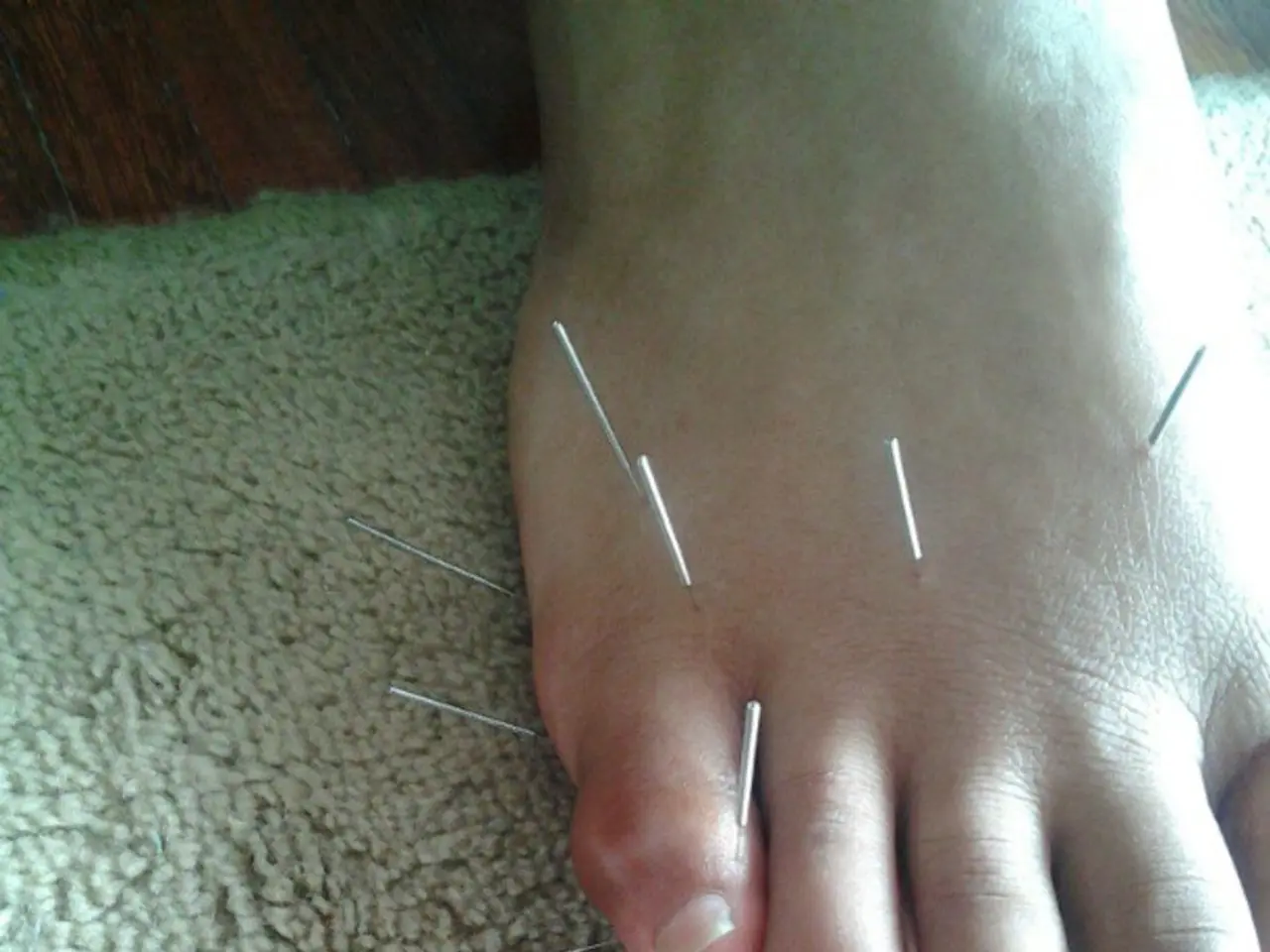Stomach Blood Clots: Recognizing Symptoms, Delivering Treatment, and Prospects
Mesenteric Venous Thrombosis (MVT), a blood clot in the superior mesenteric vein (SMV), can lead to serious complications such as intestinal ischemia. This condition requires immediate medical attention and treatment in a hospital setting, as it has a high rate of death.
Risk Factors
The risk of developing MVT is influenced by a variety of factors. These include hypercoagulable states, Virchow’s Triad, acquired medical conditions, cardiovascular factors, and other risk factors such as older age, obesity, smoking, diabetes, high blood pressure, high cholesterol, use of certain medications, and metabolic disorders.
Hypercoagulable states can be inherited or acquired. Inherited thrombophilias like protein S deficiency (due to PROS1 gene mutations) and acquired conditions like cancer, inflammation, or COVID-19 infection contribute to the risk. Virchow’s Triad, which consists of blood stasis, endothelial injury, and hypercoagulability, also plays a role. Acquired medical conditions such as pancreatitis, inflammatory bowel disease, intra-abdominal infections, recent abdominal surgery, severe infections, dehydration, and trauma can increase the risk. Cardiovascular factors like atrial fibrillation, heart failure, recent heart attack, vascular disease, atherosclerosis, and low blood flow states also pose a risk.
Symptoms
The symptoms of MVT can vary, but severe abdominal pain disproportionate to physical exam findings is a classic sign. Other symptoms may include gastrointestinal problems such as nausea, vomiting, diarrhea (sometimes bloody), and abdominal distension or tenderness. Signs of systemic compromise, such as rapid heart rate, low blood pressure, and even shock in advanced cases, may also be present.
Pathophysiology and Additional Details
When the SMV is obstructed, it raises venous pressure, leading to bowel wall edema and hemorrhage. Prolonged obstruction can cause ischemic infarction. In chronic cases, collateral venous circulation may develop, reducing the severity.
Diagnosis typically involves imaging such as CT angiography or Doppler ultrasound to detect venous blockage. A CT scan with contrast is preferable, as it can detect 90% of MVTs and has a superior ability to detect intestinal ischemia.
Treatment
The treatment for MVT depends on its location and the person's overall health. Doctors may administer thrombolytics to help dissolve existing blood clots. Catheter-directed thrombolysis may be performed to deliver a clot-dissolving medication directly into the clot. Anticoagulants may also be prescribed to help prevent additional blood clots from forming. Examples include apixaban, dabigatran, edoxaban, rivaroxaban, warfarin, injectable anticoagulants like heparin, and low molecular weight heparin.
In some cases, a thrombectomy may be performed to help pull or suck out a blood clot. People with cancer have an increased risk of developing blood clots, particularly those with cancer of the stomach, pancreas, kidney, bladder, uterus, lung, and brain.
After successful treatment, most people can fully recover and resume their normal activities. It's important to note that blood clots can form in the deep veins of the legs, abdomen, or pelvis, and a blood clot in the abdomen is referred to as mesenteric venous thrombosis (MVT). If you suspect you may have MVT, seek medical attention immediately.
- Cardiovascular factors associated with the risk of Mesenteric Venous Thrombosis (MVT) include atrial fibrillation, heart failure, recent heart attack, vascular disease, atherosclerosis, and low blood flow states.
- In addition to hypercoagulable states and Virchow’s Triad, acquired medical conditions such as pancreatitis, inflammatory bowel disease, intra-abdominal infections, and metabolic disorders can increase the risk of developing MVT.
- A CT scan with contrast is the preferred imaging technique to diagnose Mesenteric Venous Thrombosis, as it detects 90% of MVTs and has a superior ability to detect intestinal ischemia, a serious complication of the condition.
- Health-and-wellness enthusiasts must understand the importance of digestive health, as gastrointestinal symptoms like nausea, vomiting, diarrhea, and abdominal pain can be indicative of severe medical-conditions, such as Mesenteric Venous Thrombosis, that require immediate medical attention.




